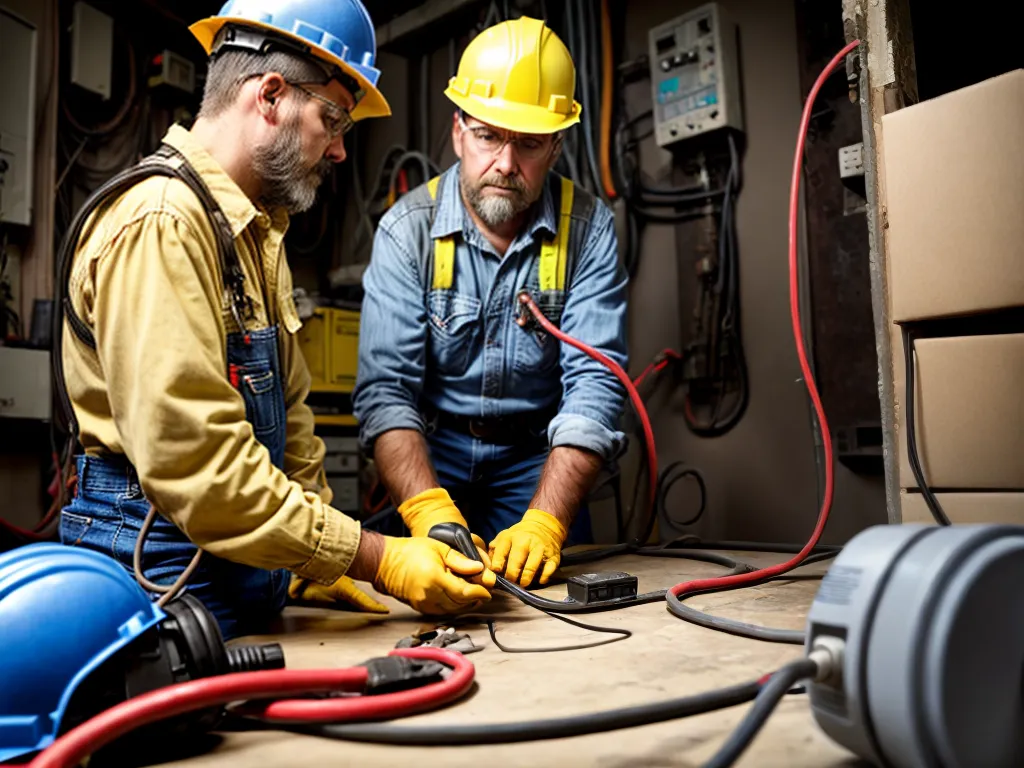
7 Electrical Safety Tips for Your Old Shop That Nobody Talks About
Having an old shop comes with its own unique set of electrical safety concerns. Without proper precautions, you could be putting yourself and others at risk. Here are 7 essential electrical safety tips that you need to know when working in an older shop environment:
Do a Thorough Inspection of All Electrical Systems
As a first step, I would do a complete walkthrough and inspection of the electrical systems. This includes:
-
Checking that all electrical panels, junction boxes, conduits, and wiring are in good condition with no exposed conductors or other hazards. Pay close attention to insulation, signs of arcing/overheating, and corrosion.
-
Verifying that all circuits are properly labeled and that no modifications have been done that compromise safety.
-
Testing that all grounding systems and GFCIs are operating properly. Faulty grounding can lead to electrocution and shocked.
-
Evaluating the overall electrical load and if upgrades may be needed to support equipment. Outdated wiring can present fire and electrocution risks.
Thoroughly inspecting the electrical systems allows me to identify any deficiencies and prevent accidents down the road. I would enlist a qualified electrician if anything looks questionable.
Have a Dedicated Power Source for Large Equipment
Heavy machinery like table saws, lathes, and dust collectors can draw a lot of current. Rather than plugging these into shared outlets, I would have a dedicated circuit installed just for that equipment. This prevents tripping breakers or overloading circuits when operating the machines.
It also reduces the chances of power fluctuations that can damage equipment or affect performance. A dedicated circuit provides stable power tailored to the specific needs of the equipment.
Upgrade Outlets to GFCI Protection
Replacing regular outlets with GFCI (ground fault circuit interrupter) outlets adds an important safety barrier, especially around water sources. GFCIs shut off electricity almost instantly if a ground fault is detected, protecting against electrocution.
I would have GFCIs installed in any wet areas like sink counters, near water heaters, or where condensation is common. They are also recommended for outdoor outlets in the shop yard. This added protection is relatively inexpensive but could truly save my life.
Label and Organize All Circuits
Knowing which switches control which lights and outlets seems obvious, but in an old shop this can get confusing. Taking the time to properly label each circuit at the breaker box and throughout the shop makes it safer when doing repairs or modifications down the road.
I like to organize circuit labels by zone - "Lights Zone 1", "Outlets Zone 2" etc. A small investment in labeling pays off by preventing accidental shutdowns of critical equipment.
Inspect Extension Cords Frequently
Extension cords are unavoidable in a shop setting, but that also means they are prone to damage from being stepped on, tripped over, or moved around frequently. I inspect all extension cords thoroughly:
-
Looking for exposed wiring or missing ground pins. I discard any damaged cords immediately.
-
Not daisy chaining cords or using longer cords than needed. This can cause voltage drop and potential fires.
-
Using the proper gauge cord for the amperage rating of the equipment being powered. Thinner cables can overheat easily.
Making extension cord safety a priority reduces the chances of electrocution or fires.
Have Proper Overcurrent Protection
Overcurrent from short circuits or motor startup surges can quickly lead to conductor or equipment damage. The circuit breakers or fuses must be properly rated to allow safe interruption of overcurrent.
I review the electrical tools and machines in my shop to verify the correct amperage circuit breakers are installed. For large equipment, I also have surge protection, reduced voltage starters, and capacitors to reduce overcurrent impacts and electrical stress.
Eliminate Tripping Hazards Around Electrical Panels
The electrical panel and surrounding area should be free from any obstructions that could limit access. Even a few boxes temporarily stored near the panel can make it difficult to quickly flip a breaker off or on.
I ensure at least 3 feet of clearance around the panel cover and interior working space so I can easily move and reach for shutoffs in an emergency. The last thing I want is to trip over something just when I need to cut the power.
Following these tips vigilantly helps maintain safety in my vintage shop. The electrical systems might be old, but taking proper precautions and upgrades lets me work confidently knowing risks are minimized. I don't take any chances when it comes to electrical safety - doing it right keeps both my shop and myself protected.